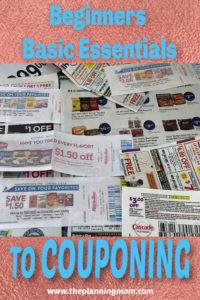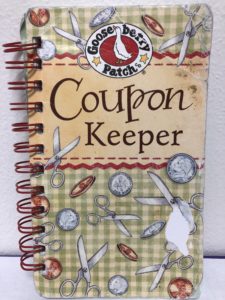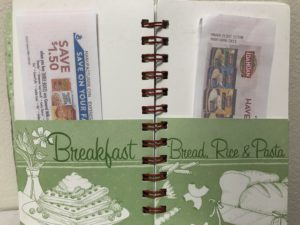
Couponing is an easy way to save money on your grocery bill. There is a coupon for just about every type of product out there. For a beginner couponing may take some time, but the money saved makes it all worth it. Let me share with you a guide to the beginners basic essentials of couponing. Start saving more money today!
Basic Ways to Get Coupons
Here are a few basic ways to get coupons:
- Store coupons – When you are checking out at a store coupons may print with your receipt. These are often coupons for items that you just bought so chances are high you will purchase the item again.
- Newspaper/Flyers/Ads – Different companies send out mailers to people’s redience. These include flyers, ad books, and coupon envelope mailers. If you subscribe to a newspaper there can be coupons in there too.
- Ecoupons – Some stores have online coupons that can be used at their particular store. This feature may attract you to a particular grocery store. They can usually be found on the stores’ website. You “clip” the ones you want and they are added onto your account. Then when you purchase an item and sign into your account at the checkout, the coupon deducts from your total.
- Websites – There are different websites you can subscribe to that will email coupons. A couple websites I have used are couponmom.com and coupons.com. You do need a printer to print out the coupons.
- Product Coupons – Some products you purchase will include a coupon on the packaging or inside the package for a future product. It may be of the exact product you bought or a new product they are advertising and want you to try.
A Coupon Organizing System is Essential

For a beginner, the first thing you must do to start couponing is have a place to store your coupons. A coupon book is the basic essential when organizing your coupons. There are different styles to choose from so you have to figure out what works for you. If you can’t find one you like you can always make your own. Personally I like the ones where the coupons stand vertical and there are pockets for different categories.
A coupon book should have different areas for the many categories of grocery items. This may include dairy, breakfast, meats, frozen, bread & pastas, fruits & vegetables, desserts, and many more. I customize my book to fit my needs. There is usually a category or two I don’t use and a couple categories missing that I need. So I just rename the category pockets to what I need them to be.
In each section, put the coupons in order of expiration date. Any that are going to expire that week put in front of the coupon book so you can decide if it’s worth buying the item or not with the coupon. Then coupons you don’t use you can toss afterwards to keep your coupon book organized and up to date.
Customizing your coupon book is a key beginners basic essential to couponing and to staying organized. As a beginner you may have to try a couple styles out before finding one that works best for you.

When to Best Use Coupons
Another beginners basic essential to couponing is knowing when to best use your coupons. To get the most out of your coupons and save the most money, wait to use them until a particular item is on sale. It is like saving twice! Sometimes the savings can be so good the item is nearly free.
Lots of grocery stores will have double coupon days, so this is even better to get more value for your coupons. If I am using lots of coupons on my grocery list I make sure to go on a double coupon day.
You do have to check the store’s coupon restrictions. Sometimes they have a limit of 5 or 10 coupons you may use in one transaction. In addition, sometimes coupons will say on the top “do not double” so take that into consideration for double coupon days. Lastly, some stores will not double a coupon value more than $1. Getting the most out of your coupons is a basic essential to couponing.
Coupon Blindness
Coupons are great and all, but do not get blinded by coupons. There are many generic products that are still cheaper than a name brand product bought with a coupon. Do the math and weigh the price of a generic item and a name brand item with a coupon.
Couponing does take a little bit of time. Only print and cut coupons you are going to actually use. Do not go overboard by cutting out every single coupon you find. This is a waste of time if you don’t use them. Furthermore, if you are not going to use a product, do not buy it just because you have a coupon. Being effective with coupons is being an efficient couponer otherwise it is a waste of time and money.
Other Tips for a Beginners Basic Essentials to Couponing
- Check for exclusion products on the coupon. Look for the size or count of a coupon with a product. Often the coupon is for a very specific type of product and size. Check if it is still a good deal to purchase the specified product with the coupon.
- New products often have a coupon available. Check for one if you are buying a new product. Do not spend the money trying a new product just because you have a coupon.
- Check expiration dates or dates the coupon is available to use. The worst is handing over a coupon at the checkout only to find it can’t be used for what you are buying.
- Double check your receipt to make sure the coupons were applied properly.
As with most things, a beginner in anything can be hard. Couponing is no different and gets easier with time. You become familiar with which coupons to use and when to use them. With more experience comes saving more money. After time you learn what to look for and which products have the best coupons. Begin using these basic essentials to couponing tactics today and see all the money you save on your grocery bill.
Leave a Reply